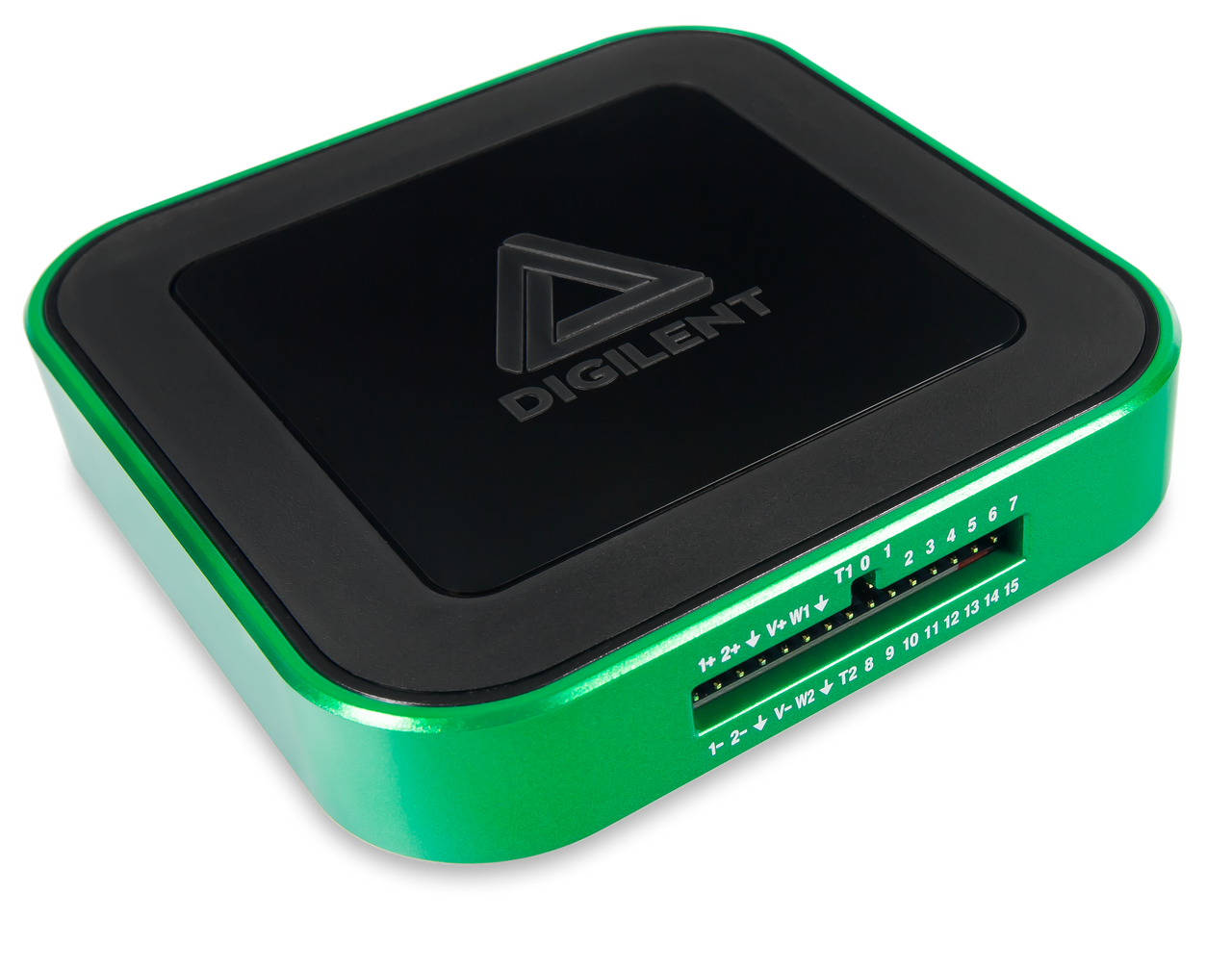This article details the differences in the new Analog Discovery 3 vs the Analog Discovery 2.
Lower Price than Analog Discovery 2
Backwards compatible with Analog Discovery 2 projects — so long as it didn’t use the 1.8 V input setting for digital pins.
Adjustable System Clock Frequency between 50 MHz and 125 MHz, allowing for up to a 125 MS/s simultaneous sampling rate on all channels for the analog inputs, analog outputs, and digital I/O.
All instruments always available in every configuration. No more losing access to digital I/O when allocating more buffer to the Wavegen.
USB Type C connection, USB 2.0 data rate. USB 3.2 Gen 1’s extra throughput didn’t add enough value in most applications.
Two differential 14-bit resolution analog inputs with 9 MHz bandwidth at -3 dB when using the MTE cables. Up to 16 bit resolution when sampling at 1/4 of the system clock frequency. ±2.5 V and ±25 V input ranges. Maximum sample buffer size doubled from 16k to 32k per channel (64k when only using 1 channel). Hardware FIR filters for each input. Record mode rate increased to 10 MS/s. Digital loopback of Wavegen and Power Supply output supported.
Two single ended ±5 V analog outputs with 14-bit resolution and 9 MHz bandwidth at -3 dB when using MTE cables. Maximum sample buffer size doubled from 16k to 32k per channel. FM/PM and AM/SUM buffers on each channel increased to a minimum of 2k samples with 16-bit resolution. Digital loopback of received Scope data supported.
16 digital I/O pins at 3.3 LVCMOS supporting 5 V inputs. Maximum sample size doubled from 16k to 32k per channel. All digital pins and the two trigger pins can have their Pull resistor configured.
– +5 V and -5 V power supplies now supply up to 800 mA (2.4 W) each. Integrated readback of the supplied voltage supported.

